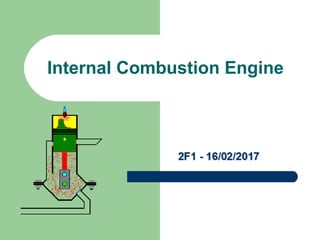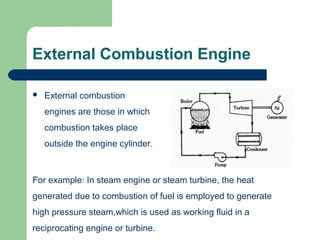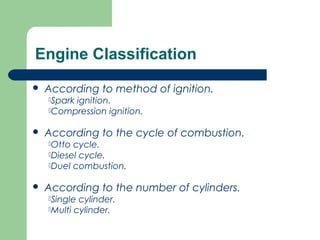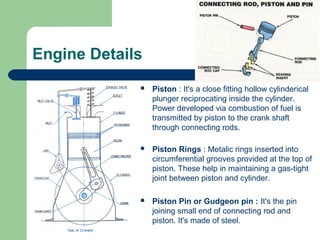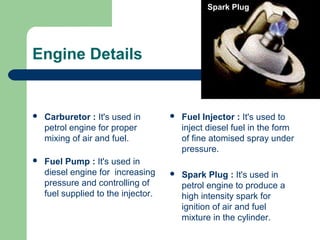Internal Combustion Engine
There are two main types of heat engines: internal combustion engines and external combustion engines. In an internal combustion engine, fuel combustion occurs inside the engine cylinder and the hot gases directly power the piston. This includes gasoline/petrol engines. The four strokes of a petrol engine are: intake, compression, power, and exhaust. In the intake stroke, air/fuel mixture enters the cylinder. In the compression stroke, the mixture is compressed. In the power stroke, combustion powers the piston. In the exhaust stroke, spent gases are pushed out.
